63% of customers expect companies to offer support via their respective social media channels.
Great customer service goes beyond providing discount offers and fixing issues. It’s about making the customer feel that their business is valued and they are a priority.
In this age of digitization, customers are no longer ready to wait for hours to talk with agents. Now, they are more likely to take their issue on popular social media platforms to vent out their frustration.
These disgruntled customers don’t just want you to know about their terrible experience with your brand, rather they want everyone to know about it. Such public sharing of grievances can create a negative image of your brand among multiple potential customers. And so brands are forced to treat these mentions as formal requests.
In such a scenario, if your brand aspires to grow & succeed, it becomes essential to be aware of the best practices of delivering social media customer service at scale. Keep reading to know about 10 such tips.
Click here to download detailed infographic on tips to provide social media customer service at scale.
Related: Social Media Customer Service - How To Do It Right
#1: Create Support Handles
#2: Build Customer Service Brand Guidelines For Your Team
#3: Respond Quickly & Personalize It No Matter The Volume
#4: Know When To Take It To DMs
#5: Know When To Respond & When To Stay Quiet To Manage Incoming Conversations Smartly
#6: Know-How To Close A Conversation To Increase Your Team's Productivity
#7: Offer Live Chat Support To Solve Multiple Problems Simultaneously
#8: Create An Omnichannel Experience
#9: Focus On Becoming Proactive To Identify Similar Issues
#10: Grow By Analyzing
You can directly jump to a section of your choice or keep scrolling.
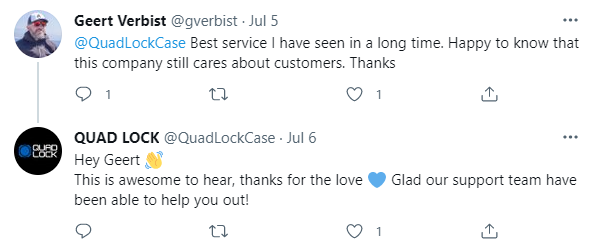
Image Source: Quad Lock Twitter
#1: Create Support Handles
How a company handles its social media customer service indicates how they manage customer sales requests on a large scale.
While creating a social media customer service strategy, you need to think about your customers and make it easier for them to ask for help. You do lose a customer through poor customer service, but you also lose them when you make the process of seeking support complicated for them.
Having a single dedicated social media handle just for customer service will contribute a lot to making things easier for your customers. In this manner, you will be able to organize the scattered customer complaints. Undoubtedly, you will be able to make prompt responses to customer queries from this handle.
Creating such separate customer support handles will prevent your social media marketing campaigns from getting overshadowed by customer queries. Designated social media customer service handles will help your brand in improving customer relationships.
Having a separate support handle reorients your brand toward more responsive, agile, and ultimately profitable operations and customer relationships.
You can consider having different support handles for several countries to manage complaints according to customer location and timezone to respond quickly. In this manner, you will be able to provide support in their native language as well.
To deal with the growing volume of requests, your brand will now need a bigger support team. You need to find the right tools and methods to help you scale these processes and ensure effective operations.
Example: Adobe manages a number of Twitter handles related to different products, but @AdobeCare is dedicated solely to responding to those who need help with the products.
Notice in the image below that Adobe Care has tweeted over 362.3K times, whereas the Adobe handle has only tweeted around 42.3K times.
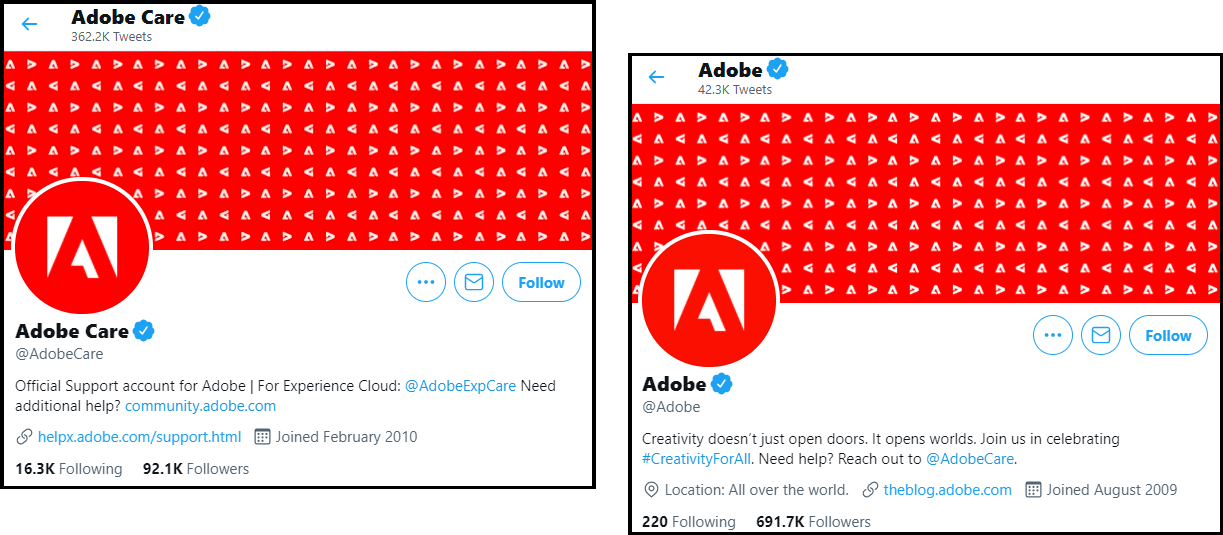
Image Source: Adobe Care & Adobe Twitter
#2: Build Customer Service Brand Guidelines For Your Team
Brand guidelines allow you to think about how your brand should sound and interact online.
As an online brand wanting to grow, you need to ensure that your social conversations align with your brand’s vision and core values. Strong customer service is vital to survive and thrive in today's competitive environment; therefore it should not be carried out reactively or sporadically.
For a brand, preparing customer service guidelines is as important as setting up a customer service team.
Brand guidelines will serve as a guide for anyone in your customer service team who will be communicating on social media to ensure brand consistency and quality.
Here are some questions that you might want to address in your social media customer service brand guidelines.
- Desired response time of each complaint
- What tone of voice should you adopt?
- How to handle a social media crisis?
- How to respond to positive feedback (liking, commenting, reposting)?
- Templates with answers to common queries to ensure that tone of the response is consistent.
Brand guidelines are important for distributed teams as it holds all team members to establish similar KPIs such as conversations per hour or time to resolve an issue. No matter which of team members is solving a complaint, every customer will be able to gain a similar experience if brand guidelines are established and followed within your team.
These guidelines will empower your team members to offer support that’s culturally appropriate and personable.
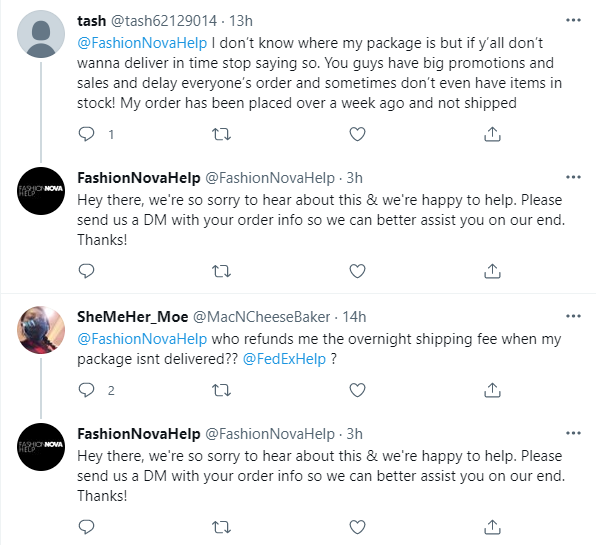
Image Source: Fashion Nova Help Twitter
#3: Respond Quickly & Personalize It No Matter The Volume
73% of adults in the US claim that the best thing a brand can do to offer them excellent customer service is to “value their time.”
Response speed matters as much as quality in social media customer service.
40% of customers who complain on social media expect a response within one hour.
Customer report queries on the brand’s social media page to grab quick attention and response. The fast-paced environment of social media has made customers impatient.
Responding quickly becomes even more difficult when complaints are received at a large volume. In such a scenario, if your brand chooses to react quickly, you can easily pacify your customer’s complaints and improve their perception of your brand.
More importantly, a quick response to customer complaints on social media shows that you genuinely care about their problem. When people see a complaint going unanswered, it looks like your brand is trying to avoid the situation or not treat all customers equally.
Unemotional and impersonal responses will amplify the already negative situation.
No one enjoys talking to a device even though they use the device to communicate. People respond to people - it’s that simple. Humanizing your brand makes your brand more relatable to customers. Personalize your responses on a case-by-case basis to be specific to fit the customer’s needs. A response that feels automated will be counter-productive.
Here’s how you can add a human touch to your social media responses.
- Use the customer’s name
- Ensure the replies are written in a positive tone
- Show empathy and apologize when necessary
- Close replies with the brand specialist’s name or initials rather than your company name
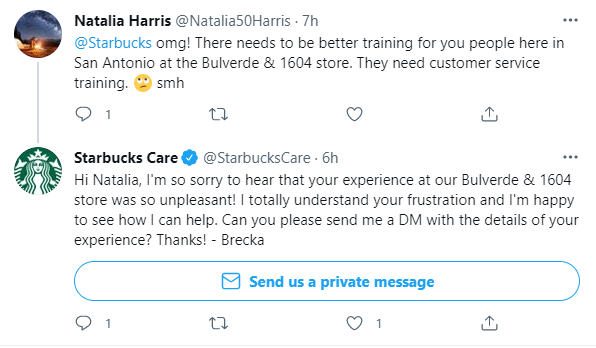
Image Source: Starbucks Care Twitter
If your brand is dealing with the same queries over and over again on your social, Statusbrew's Saved Replies can reduce your team's response time by saving you from typing out the same answers repeatedly.
When managing customer complaints at a large volume, personalization becomes difficult to be achieved. But personalization will build trust, and from the trust will come loyalty. Customers who know you have their best interests at heart are more likely to return back and stay with you for longer.
40 % of consumers in the US say that they have made a more expensive purchase than initially planned because the brand provided them with a personalized experience.
Statusbrew's Engage Inbox makes all your customer interactions seamless, personal, and efficient. All your conversations from Facebook, Twitter, Instagram, LinkedIn, YouTuber, Google My Business are synced & available in a unified inbox minimizing the hassle to log in to different accounts to respond quickly.
#4: Know When To Take It To DMs
77% of customers would be likely to recommend a brand to a friend after having a positive experience.
Certain customer complaints would be easy for you to fix in no time, but some might be complicated. Not every problem can be solved instantaneously.
And the good part here is that you don’t need to solve every customer complaint immediately, but you need to be upfront and honest about this with your customer. Most of your customers will understand this, but if some don’t, be polite with them.
Listen to the customer’s complaint and act fast. - Richard Branson
Every aspect of customer service will not be feasible for your brand to address on social media. You might as well require some customer data to know more about the issue. Even while receiving customer complaints at scale, sensitive information such as order number and customer contact details should be asked over DMs.
Hide any replies from your customers that might include personal information so no one else sees it.
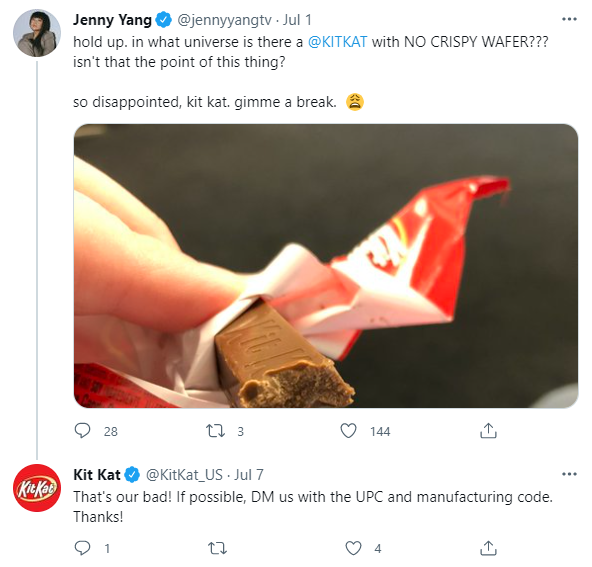
Image Source: KitKat US Twitter
Before taking the discussion off social media, acknowledge the receipt of the information on social media. It would be highly reassuring for your customers to know about the acknowledgment and that someone is working on the resolution.
Potential customers will notice your subsequent conversation and response to the complaint. So you need to create a favorable external resonance here by coming back to the same social thread once the complaint has been resolved and leaving an update on the matter.
#5: Know When To Respond & When To Stay Quiet To Manage Incoming Conversations Smartly
Not all negative comments should be treated equally because all negative comments are not the same.
There will be critics and internet trolls who would use inflammatory comments just to provoke responses. You should understand here that engaging with trolls and responding to their comments will do more harm to your brand than good.
Sometimes the best response is no response.
Now you would be questioning if hiding comments on your brand’s social media page would be a good decision or not? The answer to this is yes and no.
Blatant attacks on several brands have become too common on the internet as users can hide behind anonymous or false profiles. So it’s better not to address them. In such a scenario hiding or deleting the comment is the best idea.
Learn more about How to Hide Comments on Instagram - Automatically and Manually & How to turn off comments on Facebook post
But hiding every negative and unfavorable comment is a bad business practice.
Honest customer feedback will help your brand to improve and better meet its needs. If someone leaves behind a negative review coupled with a legitimate reason, take up the opportunity and resolve the situation.
For the most part, these reviews will provide a good representation of what customers expect from your brand.
While managing social media customer service at scale, Statusbrew makes it possible for you to hide and moderate comments on several social media platforms most efficiently. You can also create workflows to hide comments based on the conditions you define automatically.
Statusbrew's Rule Engine allows you to automatically manage your large volume of incoming conversations across social. You can update your conversations based on the conditions you specify, and combat spam and trolls before they have a chance to ruin your brand's reputation.
You can set rules and assign conversations based on conditions to your team member for managing a large volume of incoming conversations effortlessly.
Learn more about How To Set Up Custom Rules In Rule Engine?
#6: Know-How To Close A Conversation To Increase Your Team's Productivity
The ability to close customer conversations improves the customer experience even more. Leaving an issue unresolved will create an unnecessary problem for your brand.
96% of dissatisfied customers will never let you know that there was a problem.
Not every customer will communicate what is bothering them (often because you didn’t ask them in the first place.)
Your willingness to close a customer conversation will indicate two important things to them.
- You care about getting the customer’s problem solved
- You are willing to hang with the customer until their problem gets solved
These two factors will go a long way to ensure that your happy customers return in the future. Also, as a customer-centric brand, there is nothing more satisfying than seeing the look of gratitude on your customer's face knowing that you just solved their problem.
Essentially, closing a conversation is where you ensure that the customer’s issue is taken care of before you leave them on their way to use your products completely.
“Is there anything else we can do for you? I’m happy to help!” Such small opportunities are the ones that ensure your customers that their satisfaction is your brand’s top priority.
However, it becomes necessary to close customer conversations as early as possible and not to devote more than the required amount of time to any complaint. In this manner, your team will be able to increase its productivity in resolving more complaints in the least possible time while also ensuring that the customers are happy and contented with their responses.
#7: Offer Live Chat Support To Solve Multiple Problems Simultaneously
According to Forrester, consumers who use chat are 2.8 times more likely to convert than those who don’t.
With online purchases on the rise, it has become the norm for customers to get in immediate contact with a brand's customer support. If you want to fully support your customers and provide them with a positive experience, you can consider opting for live chats.
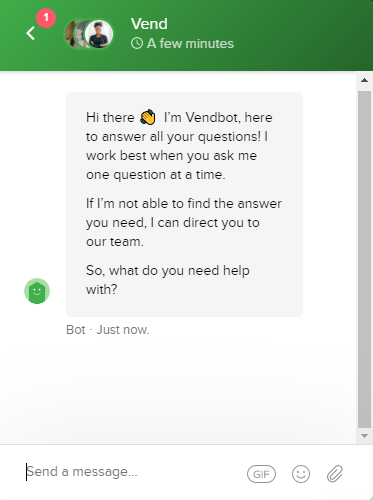
Image Source: Vend
Your aim should be to make your social media customer service more accessible and reachable for your customers. Instead of passing information between customers and your support via social media posts and tweets, your brand can move the social media customer service to live chat.
The benefits of live chat stretch far beyond just giving your customers a faster and more convenient medium to get in touch with customer service. In addition to improving the customer experience, live chat boosts your customer service team’s productivity and increases customer acquisition and onboarding.
Protip: If you choose to offer live chat support, list down the availability hours in the bot so that your customers know when they can contact you and when not.
When it comes to customer service through live chat, you can extend the reach of your live chat well beyond the pages of your website.
Whenever a customer reports a problem through Facebook or Twitter, you can reply to them with a chat link to provide an immediate way of contact. When clicked on the link, a chat window will open up to give the customers a direct way to reach your customer service.
You can also use live chat to take customer contact details and order details required to solve a complaint rather than asking it in the comments section or DMs.
When you include links to live chat while replying to customer complaints, ensure to use link shorteners. This practice is essential in the case of social media platforms like Twitter, where every character counts.
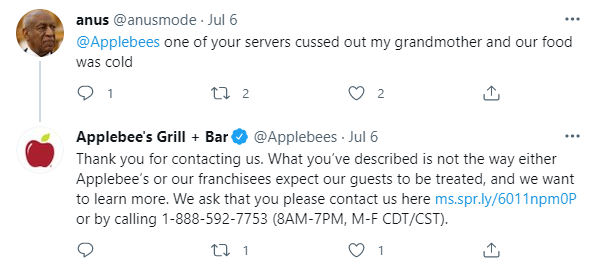
Image Source: Applebee's Grill + Bar Twitter
Live chat will ease the stress for your team to get on every complaint call and provide speedy solutions to customer inquiries. Customer support agents will be able to work on two or more chats simultaneously and solve multiple problems at the same time.
Related: How To Use Facebook Messenger For Social Customer Service
Provide smarter support with chatbots
Adding a knowledge base to your chat-bots gives support resources to your customers for review before they could reach out to your team. The more extensive and informative this resource is, the fewer questions your customers will have for your support team.
This will free up your team's time to focus on complicated complaints that take a longer time to answer.
Learn more about 10 Advantages Of Using Facebook Chatbots For Businesses
#8: Create An Omnichannel Experience
How easy is it for your customers to contact you?
Customers nowadays use multiple channels and devices to connect with a brand. At the same time, they don’t want to juggle between phone calls, emails, chats, and social media responses to resolve their issue. They expect a seamless experience from the moment they discover your brand online.
90% of consumers desire a consistent experience across all channels and devices.
Having a customer experience strategy in place for any and every channel where your clients remain active is known as omnichannel support. This will make it easy and possible for your customers to contact your brand, and you’ll eventually notice an improvement in their perception of your brand.
A robust omnichannel approach has the potential to increase your revenue year-over-year by approximately 9.5%.
Your customer’s expectations will continue to evolve over time. They will keep moving to new social networks and find new ways to communicate with your brand. So, make sure your strategy to provide an omnichannel experience is also evolving with social media updates and audits.
When your brand offers multiple spaces to your customers to engage with your brand, it's imperative that you remain responsive on each of these channels. If all social media platforms are integrated, your team can respond to customers promptly and give them consistent service irrespective of the channel they prefer to communicate.
Statusbrew integrates several social media platforms to bring all your conversations in a unified inbox. Incorporating it with slack, you can receive instant notifications about your brand DMs, comments, and mentions.
#9: Focus On Becoming Proactive To Identify Similar Issues
Whenever a marketing campaign fails, it's usually due to not being aware of your customers’ expectations. Having said that, there's an inherent need to look beyond the traditional shopping behavior, industry trends, and sales data to keep your business afloat.
Keeping a check on what is being said about your brand online has become more critical than ever. Most importantly, you need to make sure that what you are saying on social media aligns with your customers’ sentiments.
Social listening helps you with both these aspects. It gives you a holistic snapshot of how consumers perceive your brand. Social sentiments can clue you into the audience's perception before the launch of a product.
Social media listening tools analyze what’s been said about your brand and industry on social media. Setting alerts on your brand’s social media pages using social listening tools helps you catch issues before they turn into crises.
It's essential to understand why loyal customers are buying from your brand, and it's equally important to know why some people aren't. Social media listening tools help to identify comments from such an audience. Such comments can spark an idea of reaching out to an untapped audience base.
Example: See how McDonald’s responded to the customer’s complaint even though the customer didn’t tag their official account.
Image Source: McDonald’s Twitter
By becoming proactive, you will be tackle a similar category of issues that might arise from multiple customers. By resolving such issues which are received from several customers, you will be able to eventually reduce the number of complaints coming up on your social channel in the same form from different customers.
Statusbrew's Social Listening feature helps you track such customer behavior, which you may not be able to dig up easily on your own. With this feature, you can track metrics such as untagged mentions, trending topics in your niche, and about your competitors.
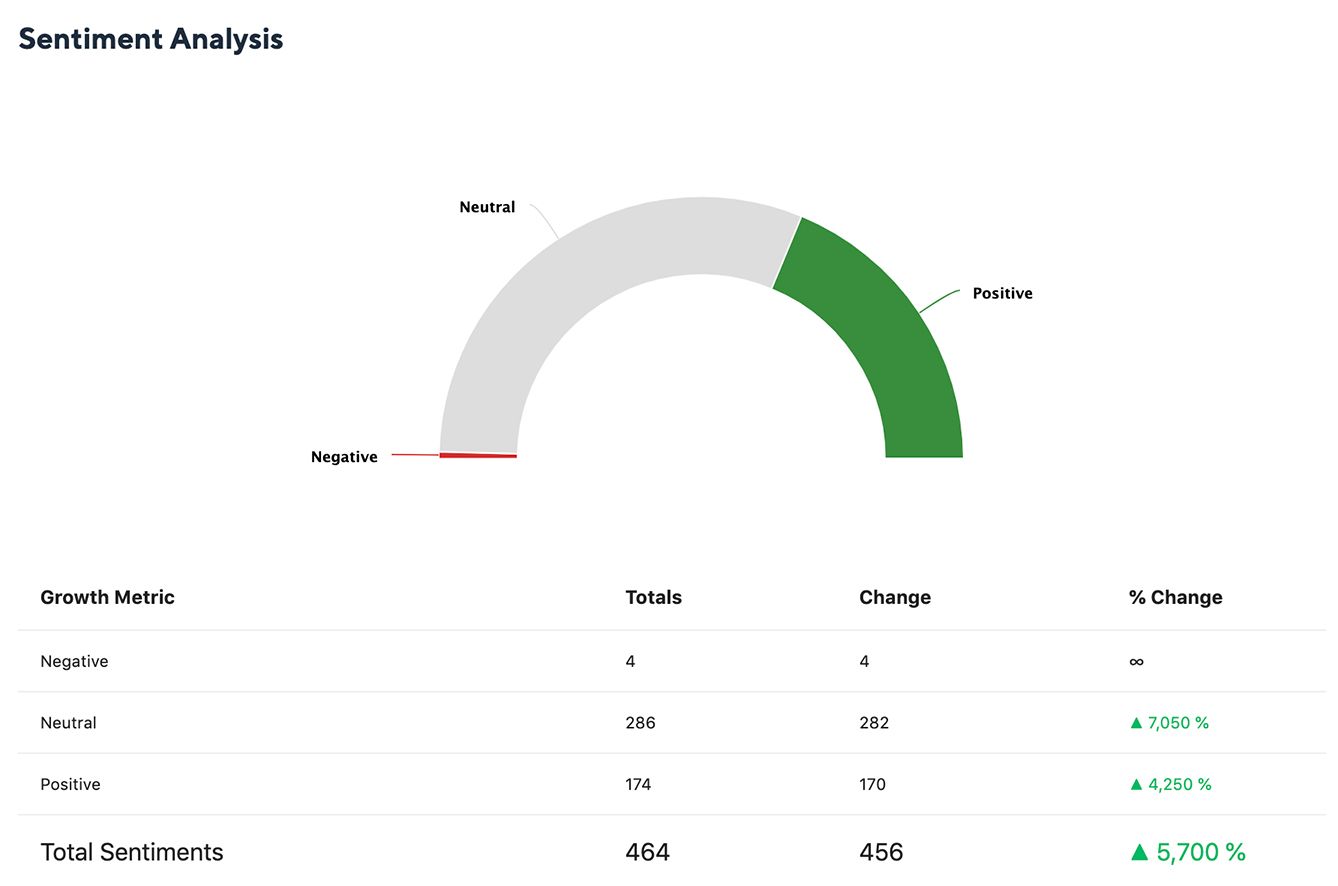
#10: Grow By Analyzing
Have you ever felt that your team has spent more time than required on an issue? This aspect is often overlooked in a customer support team. Sometimes, more than the required amount of focus is given to one issue because of which other issues are missed.
Every customer complaint is crucial for a brand to devise the correct social media customer service strategy. Understanding where your customer dissatisfaction is coming from will enable you to improve your product. Asking feedback is an open-ended question to your customers for knowing what they liked and disliked about your brand.
Customer feedback helps you grip on what things you’re doing really well and areas that require improvement. For deriving these issues out of customer feedback, you need to organize and analyze your feedback regularly.
While analyzing, you need to track the metrics that impact social media customer service. And there are a lot of many metrics that impact, but you need to spot the ones that make a difference to your brand.
A few possible metrics to track to improve your social media customer service could be
- Average response time
- Average complaint resolution time
- Average number of interactions per inquiry
- Tickets created per day
- Tickets closed per day
- Net promoter score (NPS)
Today, it feels like social media is controlling the world and your business. What you do with what you hear about your brand on social media is critical in this age.
Use these metrics to make the most of what’s being said about you and your brand.
This analysis will help your customer service team implement valuable customer feedback and establish a productive conversation with your customers.
As the customer's needs shift, the analysis will help you adapt.
Statusbrew helps you excel at social media customer service at scale to provide a great customer experience with every interaction.
Statusbrew's Team Reports allows you to understand how individual users are handling customer queries across the team.
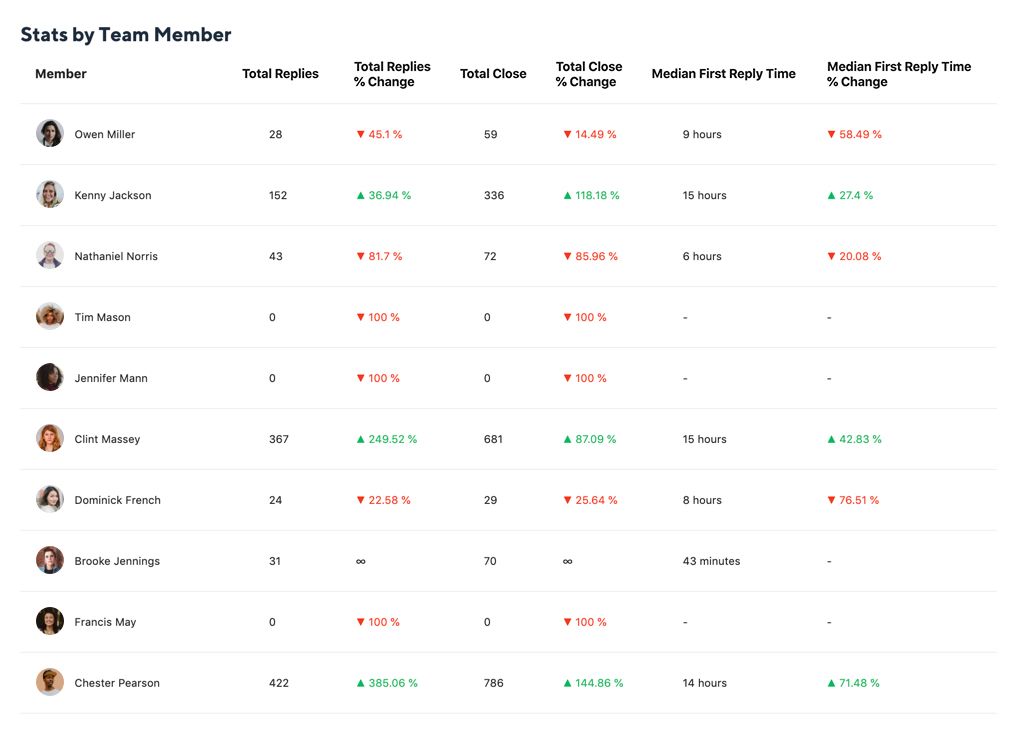
Statusbrew allows you to manage your customer data with ease by understanding their queries to identify a common pattern of complaints and win them over.
Your past customer conversations are neatly placed in a unified inbox and always available for inferences.
Want to discuss further? Book a free demo or start your free trial today!
Statusbrew is an all in one social media management tool that supports Facebook, Instagram, Twitter, Linkedin, YouTube, and even Google My Business.
Infographic

Citation Policy: Please feel free to use these infographics in any commercial or non-commercial capacity. If you use the infographics, we require a reference back to Statusbrew Blog.




Explore the Statusbrew range of social media tools
Cancel anytime!